INDIA WORLDS BEST INVESTMENT
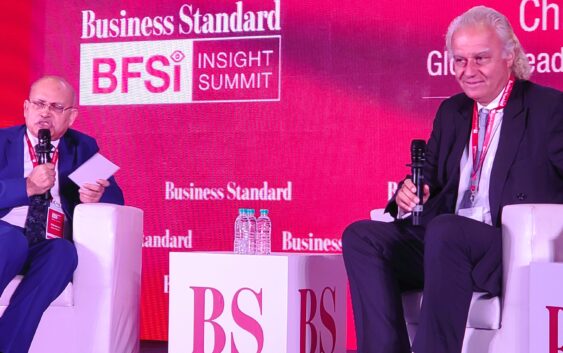
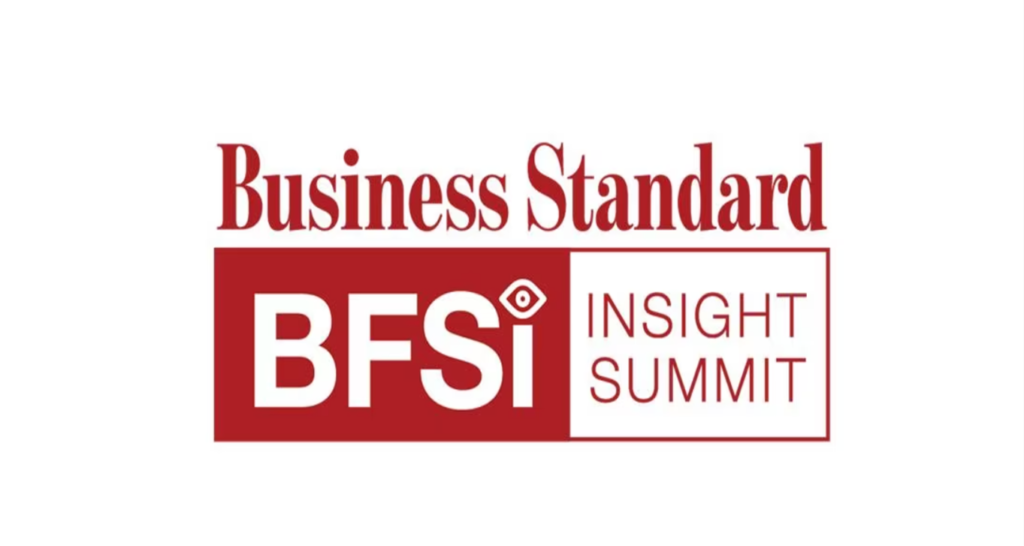
The Business Standard BFSI Insight Summit 2023 was held in Mumbai at Jio World Centre, BKC, on October 2023. The country’s biggest BFSI summit hosted some of the most prominent names of the financial sector — from Reserve Bank of India (RBI) Governor Shaktikanta Das to Insurance Regulatory and Development Authority of India (Irdai) Chairman Debasish Panda, International Financial Services Centres Authority (Ifsca) Chairman K Rajaraman, Securities and Exchange Board of India Wholetime Member Ananth Narayan, State Bank of India Chairman Dinesh Khara, and veteran banker K V Kamath, who is also the chairman of Jio Financial Services and National Bank for Financing Infrastructure and Development (Nabfid).
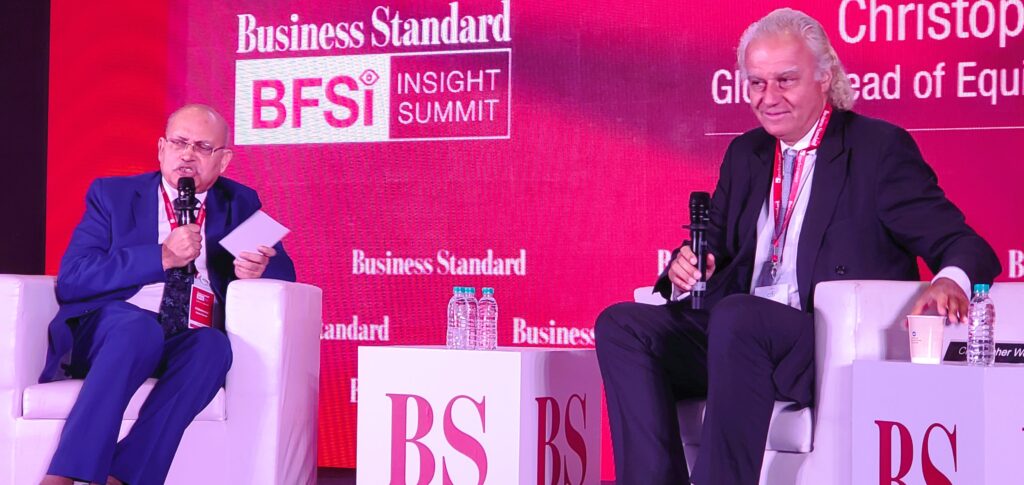
Christopher Wood, global head of equities strategy at Jefferies, said that India is the world’s finest growth story, particularly in Asia. But, he noted, there hasn’t been much investment in Indian equities by international investors. He says that even investors in emerging markets (EM) are somewhat “overweight” in India during the Business Standard BFSI Summit 2023.
“This year, however, more global money has gone to Japan. All global funds are now looking to India but the issue is one has to apply for FII status. The Indian markets will repeat the boom cycle we saw during 2002-2009. It will be driven by the housing boom, followed by private capex. The Indian property market has entered its third year of upturn after seven long years of downturn. There are no signs of any downturn for now,” Wood added.
The markets have fared well tactically, therefore investors might consider a structural investment here. Wood cautioned that India will be vulnerable to a Wall Street-correlated recession caused by rising bond rates, and that midcaps are clearly overvalued.
According to Wood, the primary step India’s market regulator can take is to encourage foreign investment in the nation. “For foreign investors, most EMs are easier to invest in than India,” Wood stated.
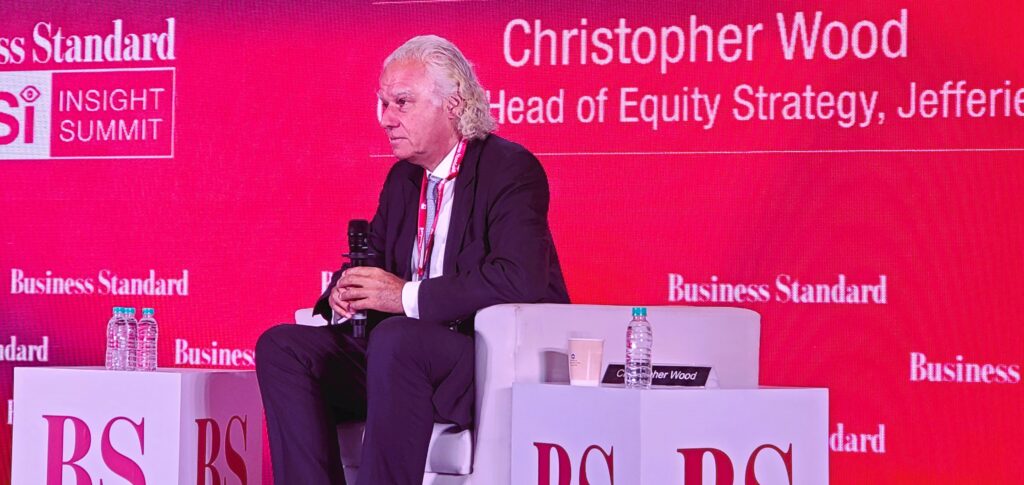
According to Wood, if the Bharatiya Janata Party (BJP), led by Narendra Modi, does not reclaim a functional majority in the 2024 general elections, Indian stock markets may fall 25% in 2024. According to him, this is the largest danger now confronting the Indian stock markets. He advises investors to “buy the dips” and keep their investments for the time being.
Even if he believes China’s problems have given India the greatest domestic equity narrative among EMs, he would not engage in a leveraged trade on the nation before the general elections. India is the finest growth story in the world, and especially in Asia, said Christopher Wood, global head of equities strategy at Jefferies during the Business Standard BFSI Summit 2023. Global investors, on the other hand, have made very little investments in Indian shares, according to him.
“If there is a repeat of what happened with the surprise election in 2004, then I would expect a 25 per cent correction, if not more. But the markets would bounce back sharply due to the momentum. The risk exists for a big correction to occur if this government doesn’t come back. While chances are less, the risks still remain,” Wood said.
Even emerging market (EM) investors, he claims, are considerably ‘overweight’ in India. “Investors should be structurally invested here as tactically the markets have done well. Midcaps, obviously, are expensive, and India will be vulnerable to a Wall Street-correlated correction caused by higher bond yields,” Wood cautioned.
Wood believes that one of the most important things the Indian market regulator can do is make it easy for international investors to invest here. “Most EMs are easier to invest for foreign investors than India,” Wood said.
He believes that if the current administration is re-elected in 2024, the production-linked incentive (PLI) programmes would gain traction. He stated that this will encourage manufacturing investment to India.
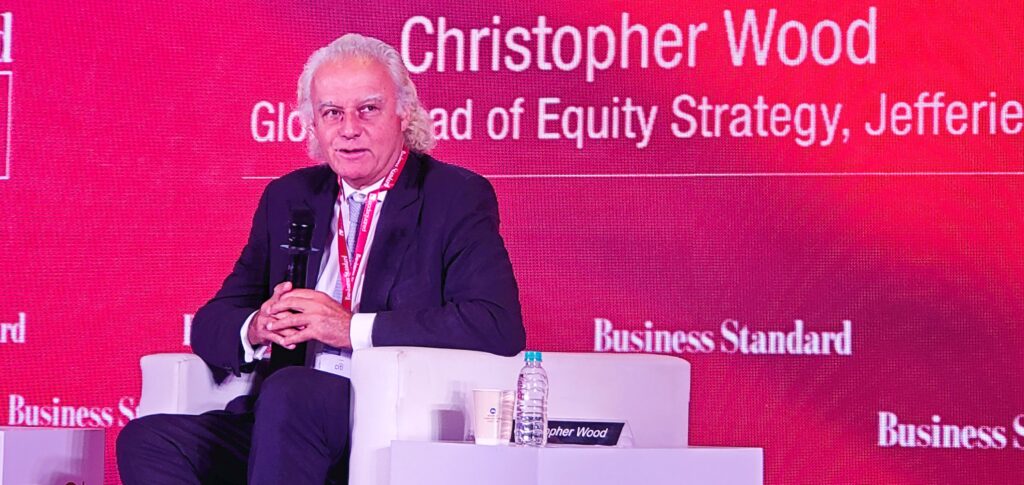
“Large corporations, including the likes of Apple, have to hedge against production in China. India is the next big domestic demand story for the next 25-30 years. So, it needs to be just 70–80 per cent as good as the likes of Vietnam, Thailand and Malaysia to get manufacturing business. For this, the government needs to be re-elected and there has to be policy continuity,” Wood said.
He noted that the steep rise in bond rates in the United States has been the most significant development in the global stock market over the previous three months.
“The consensus is that the US rates will be higher for longer, or are supply-related constraints behind the recent sell-off. Investors are worrying about the rising fiscal deficit in the US, which is a spot of bother in case the bond yields remain high. Private equity (PE) and private credit spaces, especially in the US, need to be watched. The credit risks are now rising,” he said.
According to Wood, macro economically, markets are not pricing in an escalation of the war. This is evident from the basic fluctuation in oil prices.
“I think the markets are assuming that the conflict won’t escalate into a broader West Asia war. Oil prices have barely risen; so clearly, any likely escalation has not been priced in,” he said.
Meanwhile, Wood predicts that China’s development will stall this year, similar to Japan. The main question, however, is whether this is a lasting shift or if China will recover.
“My view is that China’s growth will return. But I expect its growth to be around 3 per cent over the next 10 years against India’s 6-7 per cent growth rate. India will be the next big global opportunity for investors,” he said.
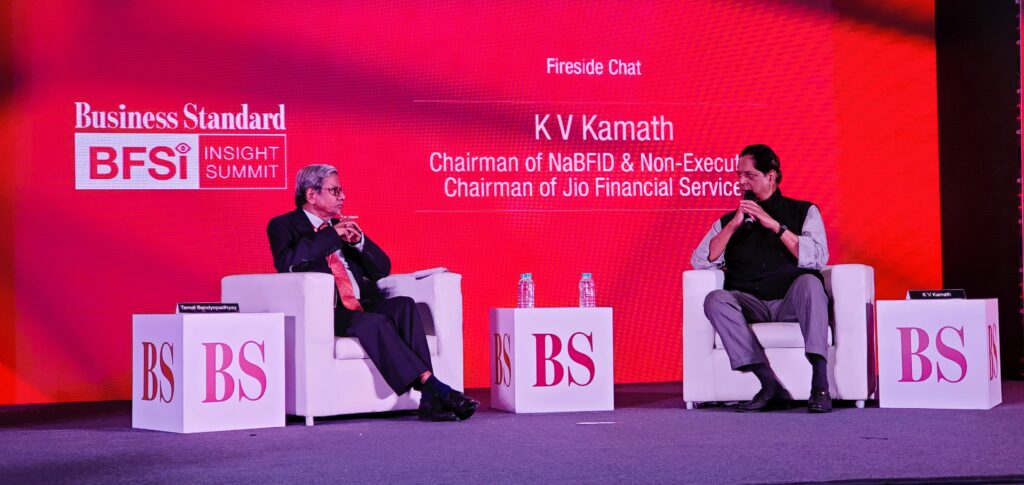
Talking to Business Standard’s consulting editor, Tamal Bandyopadhyay, in a fireside chat at the Business Standard BFSI Insight Summit 2023 in Mumbai, KV Kamath indicated that banks’ capacity to withstand losses is better now.
At the BS BFSI Summit, KV Kamath stated that he has ‘no sympathy’ for organizations complaining about not having enough personnel in a country like India.
KV Kamath, chairman of the National Bank for Financing Infrastructure and Development (NaBFID), said on Monday that India and the world have never seen such alignment in the banking sector, with banks consistently maintaining high capital adequacy and asset quality with a return on equity of 17-20%. Kamath also serves as the non-executive chairman of Jio Financial Services.
“Larger loans are more stable than the smaller ones. We used to lend at net interest margins (NIMs) of 2-3 per cent. We now see people talking of 8-9 per cent NIMs. The ability to absorb losses is higher,” he said.
Kamath said that India’s response to the Covid-19 outbreak was measured. He complimented the Centre and the Reserve Bank of India (RBI) with boosting the economy. “Post-Covid-19 and the situation in Europe, we saw inflation rising and India had a measured response. The European Union (EU) did not do much,” he said.
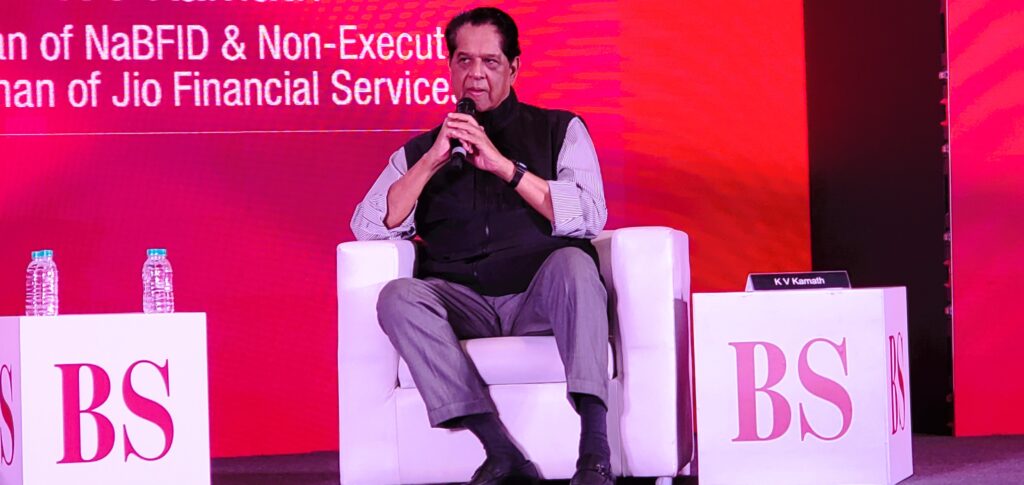
“The government provided food support to the masses, RBI took bold steps to keep liquidity and keep interest rates low. This held to turn things around post-Covid.”
Kamath further stated that the digital economy will play an increasing part in India’s economic story in the future years.
“Digital economy which is 5-7 per cent currently, will grow to 20-25 per cent of the overall economy in the next few years,” he said.
He went on to say that he is “not worried” about the global economic crisis since it is just transitory. According to Kamath, the two main causes for India’s high deposit rates are high inflation and high NIMs. However, he stated that the central bank should keep a watch on inflation and spreads.
Kamath also remarked that every non-banking financial firm (NBFC) should be considered as a bank by the authorities. “It is for the entity on how it wants to be differentiated with a bank.”
He noted that technology will be a crucial distinction. “An NBFC can run with today’s technology which is much cheaper,” he said.
Kamath, the former managing director of ICICI Bank, stated that the growth of the mutual fund business was inevitable. “Mutual Funds are taking in more money. They are slowly being understood by the marketplace. Today, a saver is an educated saver. They are comfortable taking the risk,” he said. Kamath stated that he had “no sympathies” for companies complaining about a lack of personnel. “To say that you have an HR crunch in a country like India with a vast pool is your own failure,” he said. Furthermore, he stated that while the leaders of Indian banks may not be techies, they must be cognizant of technological changes.
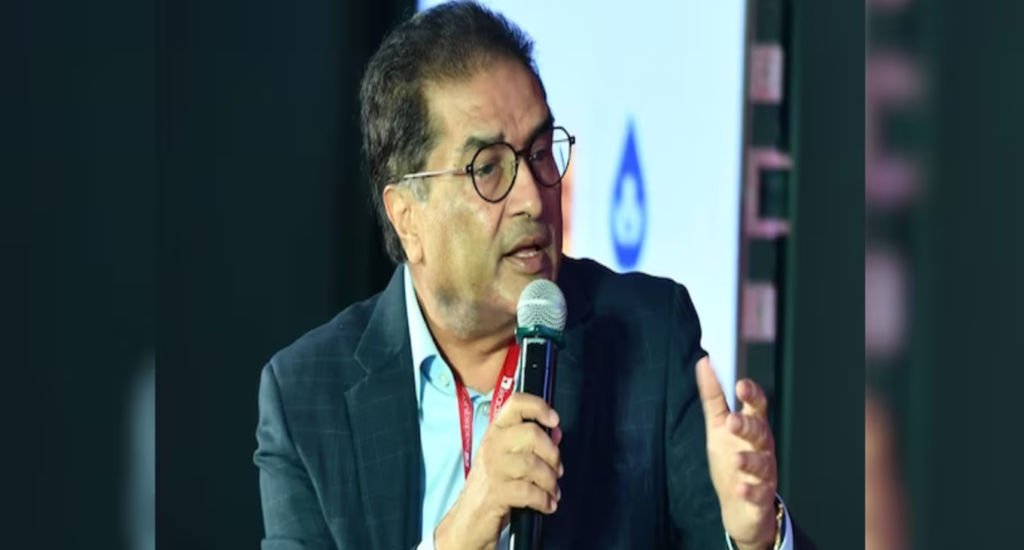
Raamdeo Agrawal, chairman and co-founder of Motilal Oswal Financial Services, made a daring prediction at the Business Standard BFSI Insight Summit that the benchmark Nifty50 index may quadruple in the next five years and grow fourfold (4X) in ten years.
“India is in a different cycle right now where we are seeing corporate upgrades. The aggregate earnings of India Inc, thus far in the July to September quarter (Q2FY24), have increased 32 per cent as against our expectation of 26 per cent. India is on a roll. The index can double in the next five years from here on, and surge 4x in 10 years,” Agrawal said.
“Commodity costs are falling, which has driven volume growth this year rather than revenue growth. Markets have, so far, not priced in better bottomline growth ahead,” he said.
Agrawal stated that every market confronts problems, particularly those that are unforeseen. Investors do not have influence over global issues.
“But, what we have control over is the earnings growth. We look at corporate earnings 90 per cent of the times, while global factors are just 10 per cent. So, my focus is always on what is the profit that a company is generating, and what is its expectation,” Agrawal added.
The actual problem is finding such a firm at a fair price. “India is an extremely well explored market. What concerns me is buying a stock at a reasonable valuation,” he said.
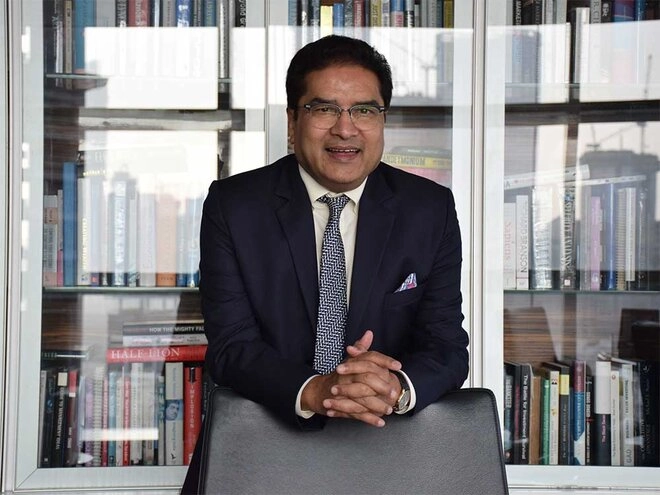
Agrawal feels that stocks are the only way ahead for Indian investors since they have enormous potential to build wealth.
“India is sitting on total savings worth $10-12 trillion. This number has the potential to grow to $100-150 trillion in 25 years. Markets will discount this value at some point. So, markets are sitting on a tsunami of savings,” Agrawal said.
In addition, three million dematerialised (demat) accounts are created in India each month. India now has 130 million demat accounts, up from 3 million in the pre-Covid period.
This figure has the potential to rise to 500 million in ten years. “I believe India is sitting on a tsunami of equities,” Agrawal said.
“So the synergies from equities, credit flow, and fantastic entrepreneurs in India are all set to benefit the Indian markets,” he said.
The benefits of increased rates, he noted, were mainly concentrated in the US markets, where yields have toughened from under 1% to 5%.
“India, historically, had yields in the range of 5-6 per cent. They are at 7 per cent now. So, I don’t think returns from Indian debt markets have turned attractive,” Agrawal added.
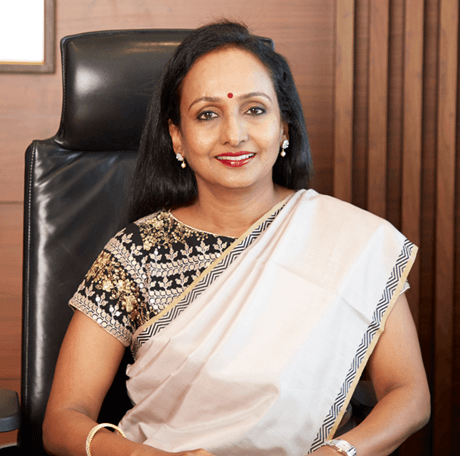
During a panel discussion, Renuka Ramnath, founder and CEO of Multiples Alternate Asset argued that PE inflows are “secularly upward” trending with Business Standard’s Executive Editor Nivedita Mookerji on “Shrinking India Pie – Will the trend reverse?”
Ramnath said,” In the current year, software-as-a-service (SaaS) and consumer tech received $4 billion. These sectors received $30 billion last year. Sometimes, there is a rush of capital in certain sectors and then, these sectors see correction. In the rest of the sectors, investment has gone up. India is a highly favoured destination for investment in Asia–Pacific (APAC).”
Regarding industry trends, Ramnath believes that India would witness greater consolidation in the next years. “India needs mega corporations for global competition and that is going to happen by consolidation,” she said. The most interesting change is the transfer of ownership from families to institutions. According to Ramnath, financial sponsors will eventually control the majority of Corporate India’s investors.
The writing was on the wall. Megacorporations are what India needs to stay profitable. Many families will consolidate in the future. The pharmaceutical business will require major consolidation. She indicated that the trend will continue to increase in the future.
Regarding regulatory limits, Ramnath remarked that the PE industry is pleased with Alternative Investment Funds (AIF) requirements. In contrast to banks, the private equity industry is still growing. Investor protection has been a top issue for regulators.
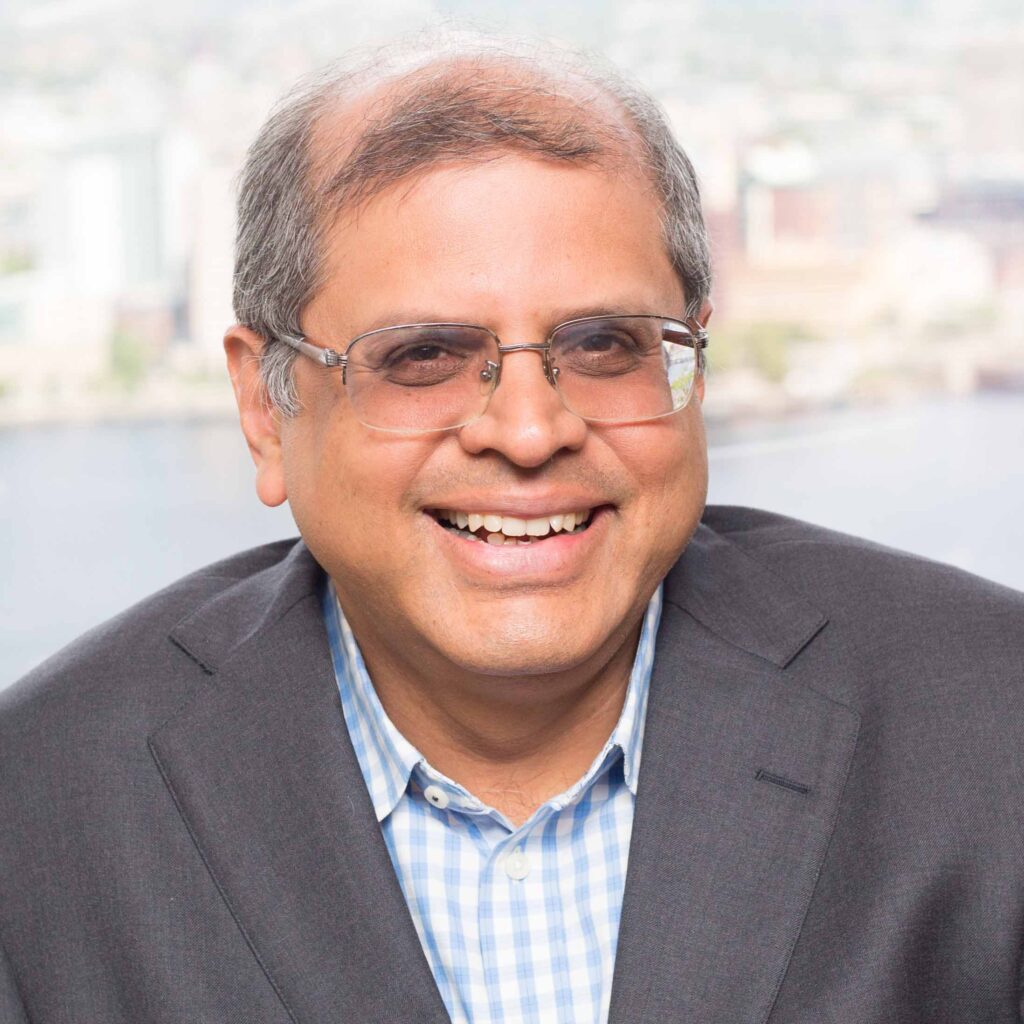
Amit Chandra, partner (private equity) at Bain Capital endorsed Renukas statement and said, “15 years ago, PE accounted for one-fourth of all foreign direct investments (FDI) in India. Now, PE accounts for over two-thirds of FDI in India.” and PE is the “most important source of long-term capital” for India.
Chandra added, “We live in a very interlinked world. Given the scale of our economy, we have to plan for these economic and political events. To truly build an ‘atmanirbhar’ capital market, we need to build a domestic asset management industry.”
Over the next 20 years, two important trends will dominate in the Indian corporate sector, as competently managed enterprises and developing Indian manufacturing will take front stage , said Amit Chandra, Partner, Private Equity, Bain Capital. “Currently, not all our engines are firing effectively; specifically, it’s the export-oriented ones that are underperforming,” said Chandra.
“The PEs are long-term capital providers capital and, therefore, when we provide long-term capital, we have to look at long-term trends. When the PEs started about 15 years ago in India, it accounted for under one-fourth of foreign direct investment to India. Now, in the past three years, despite the volatility, private equity and venture capital account for over two-thirds of foreign direct investment in India. So it has become the most important source of long-term capital for the country,” Chandra said.
According to Chandra, Bain’s investments in India account for around 25% of its entire assets in Asia. “I see this only going up,” he said.
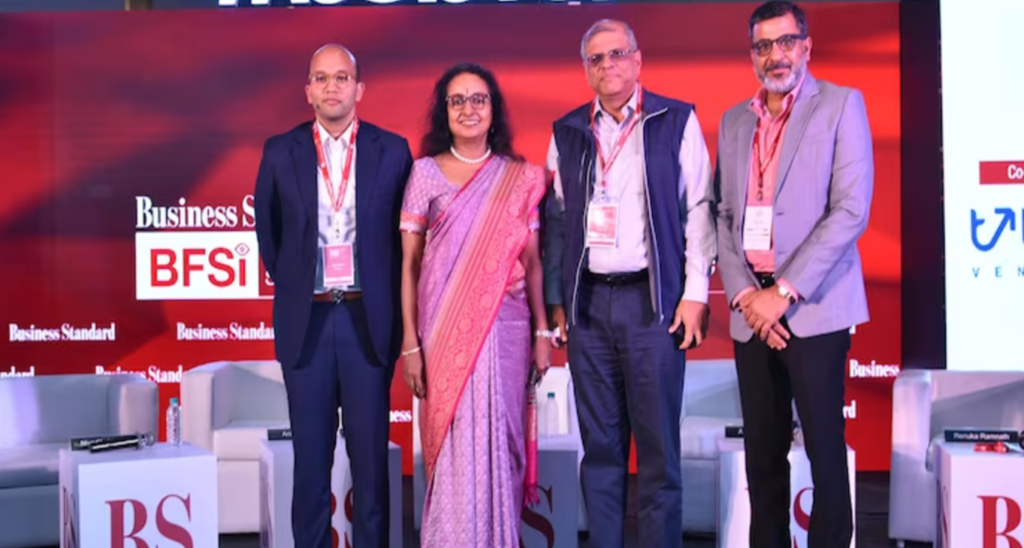

Furthermore, according to Vishal Tulsyan, CEO and managing director (MD) of Motilal Oswal Alternates, private equity investments in India have nearly doubled in the last 2-3 years. He also noted that India will require considerable capital inflows in the coming years to maintain its current high growth rate. “In the last two-three years, there has been 2X investment in PE. Investment was upwards of $ 50 billion this year. Overall, net FPI has been $25 billion and net private investment is upwards of $150 billion.”
“Over the next 20-25 years, India will grow to $35 billion economy and that cannot be achieved with massive integration of capital. The number of PE/VC investments over the next 7 to 10 years will be 5x of what we are seeing right now. A huge amount of capital has to be deployed, and raised offshore. Significantly, more capital has to be raised on the domestic side,” said Tulsyan, for instance, Dixon Technologies was invested in over a decade ago at a period of low investment in the electronic sector. Tulsyan stated that many Indian enterprises were investing in the industrial sector, which would contribute to India’s 10% growth rate. Tulsyan noted that while geopolitical events may have an immediate impact, they would have minimal effect in the medium and long term.
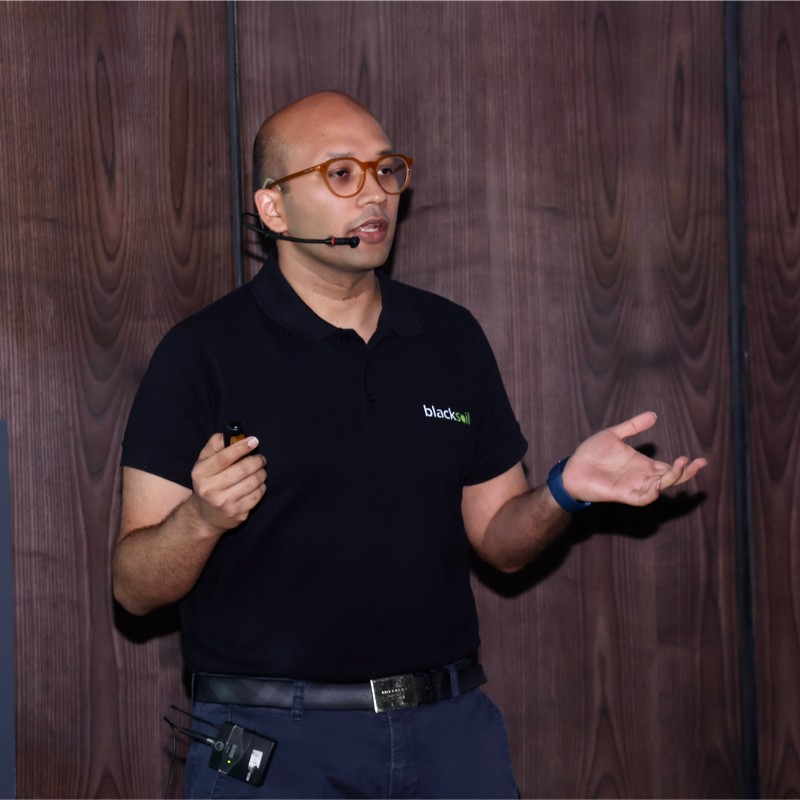
On the root of the delay, Ankur Bansal, co-founder and director at BlackSoil, stated it was predominantly in the venture capital (VC) business. “Suddenly, capital has become scarce for startups, leading to a rise in demand for alternative capital like debt. The venture debt industry is crossing $2 billion now. The industry is not really slowing down,” he said. “Slowdown is in the VC industry”.
Bansal acknowledged that the slowdown is somewhat right. He claimed that the concept of profitability was “completely elusive” and that consolidation was required. “Now everyone is working on business models. Reasonable valuations have come into place. Capital is always available for good companies,” he said.
Furthermore, Bansal noted that it will be critical to track how many Indian unicorns exist in the coming years. However, he added, “Startups are again going for the initial public offer (IPO) markets. It is an interesting trend,” he added.
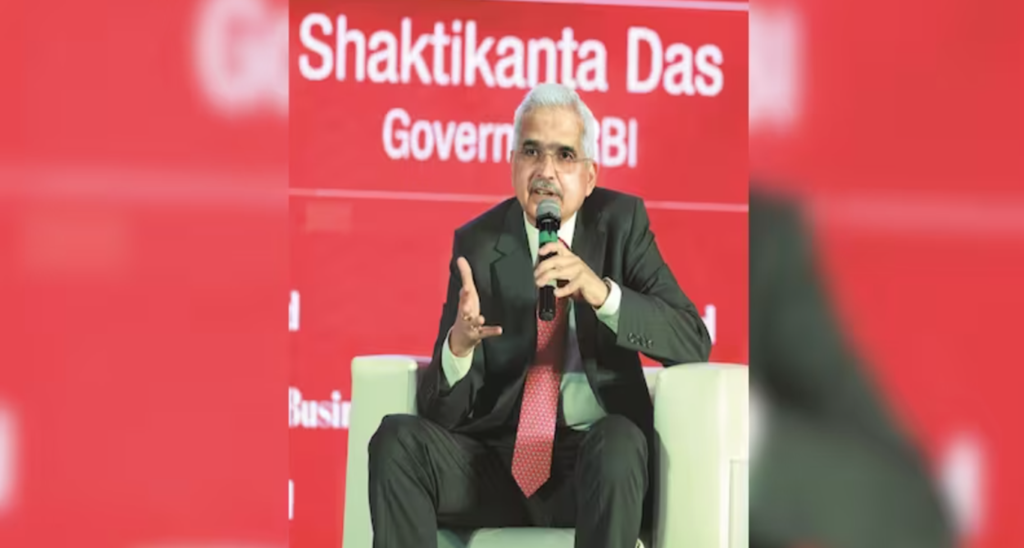
India’s second-quarter GDP growth statistic is likely to surprise everyone on the upside, according to Shaktikanta Das, governor of the Reserve Bank of India (RBI), speaking at the Business Standard BFSI Insight Summit 2023.
In a fireside chat with Tamal Bandyopadhyay, Das said, “Looking at the momentum of economic activity, looking at few early indicators, I can say that the second quarter GDP number, as and when it is released, at the end of November, in all probability will surprise everyone on the upside.”
He went on to say that the most significant threat to the global economy is shifting geopolitics and its implications for financial markets and global growth. “New flashpoints are developing, new geopolitical conflict points are evolving. So, geopolitics today poses the biggest risk for growth not just for India, but for the world as a whole.” He did, however, ensure that India is more prepared than other countries to cope with such perilous scenarios.
Das described India’s participation in the JP Morgan Bond Index as a show of confidence in the country’s economy and financial markets, but it is also a “double-edged sword”. “Inclusion leads to inflow, but on the other side, when weightage goes down, there can be outflow of passive funds.”
However, he guaranteed that the central bank is well-prepared to cope with outflows and inflows.
“Last year, when outflows happened after the Ukraine war, they were handled in a seamless manner. Also, when inflows took place before the war, we took the opportunity to build up our reserves,” he said.
“In India, given the macro and financial sector stability, passive investors keep an eye on the nuances of the economy. I don’t think we will see that kind of volatility, but if it takes place, RBI has the capacity to deal with it,” he added.
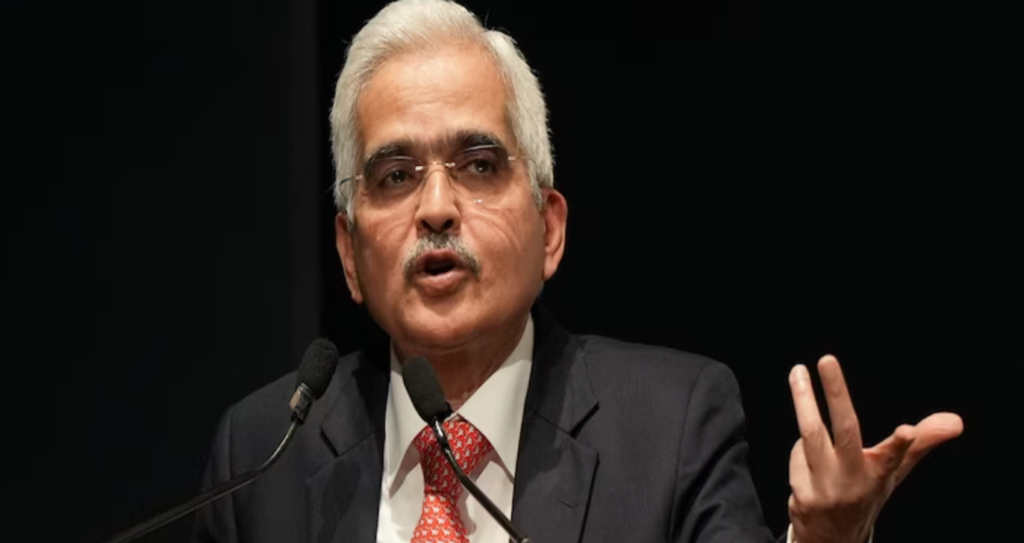
Das also stated that the RBI’s oversight has kept up with the sector’s expanding complexity throughout the world. Das emphasised that the Indian banking system and non-banking financial firms (NBFCs) are strong and robust, and that the central bank is monitoring the structure of their balance sheets rather than the micro level. “A problem which looks small in some corner of the balance sheet of any financial service provider, can become highly risky unless it has been properly understood and mitigated, Our focus is more on that,” he said.
Governor Das added that the RBI has adopted risk-based supervision. “Under this, you have to look at the risks and whether they have been properly addressed by the banks.” He stated that with the failure of certain banks in the United States, regulators have realised the necessity for far more intense oversight. “Our supervision has remained in sync with the growing complexities of the banking sector,” he said.
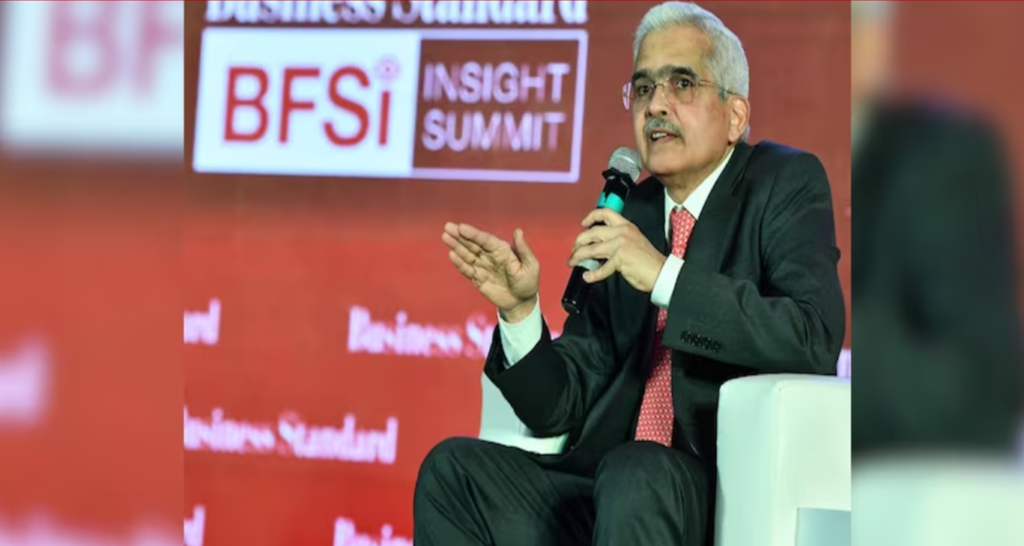
Das believes that bitcoin poses a severe danger to financial stability, particularly in emerging market nations. “That risk has to be looked at and managed very seriously,” he said. “We are not trying to stifle innovation, all innovations that are in public interest must be supported,” he added.
Furthermore, Das stated that the rupee’s internationalisation is a process rather than an end goal. “We are also looking at it because dependence on one currency for international trade has its risks. It’s not a dollar vs rupee debate. But we are looking to increase the footprint of the rupee in international trade, especially with the countries which have high trade volume with India,” he said. “The focus is to widen the footprint of Indian rupee in context of our trade with other countries,” says Shaktikanta Das, Governor, Reserve Bank of India.
Das also questioned cryptocurrency’ wider purpose and asserted, “I have yet to come across any credible explanation of what larger purpose cryptocurrencies serve.” In the same vein, he questioned, “What can cryptos do that central bank digital currencies (CBDCs) cannot do?.” The conclusion is that governments and central banks throughout the world may not be completely comfortable with the concept of private currencies.
He made it clear that these fundamental challenges must be well grasped before any cryptocurrency regulatory framework is implemented. He said, “The whole issue has to be carefully addressed.” He assured the audience that the RBI’s intent is not to stifle innovation, rather, “all innovations must be supported and promoted if they serve a public good,” he said.

